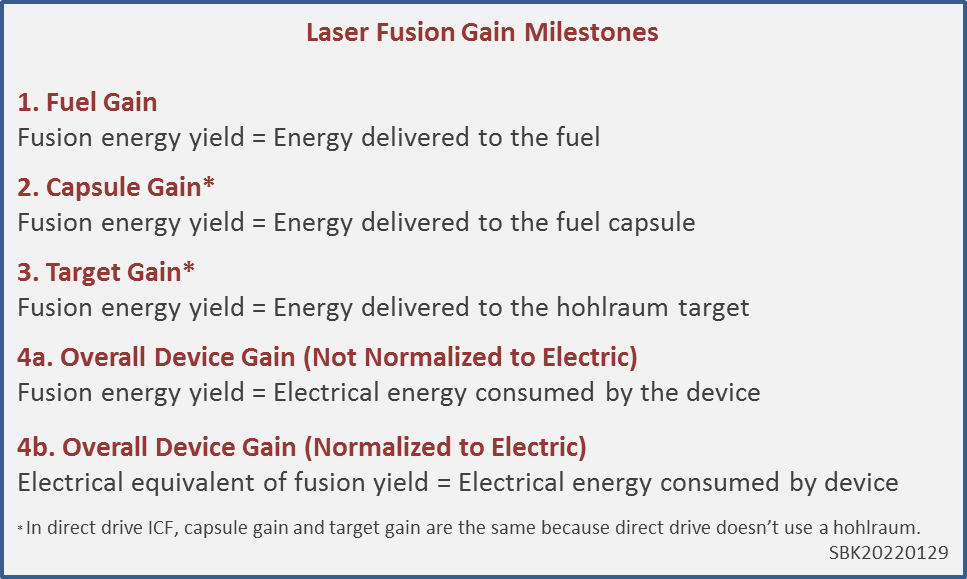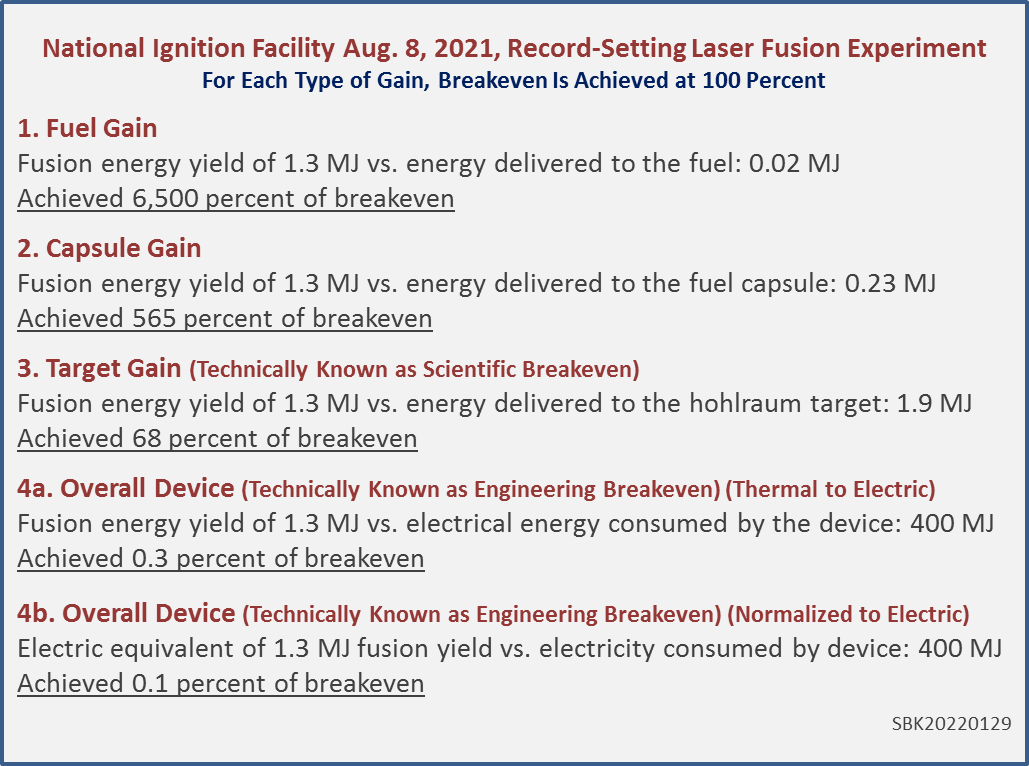#102 Why Scientific Breakeven Is Not Relevant to Practical Laser Fusion Progress
By Steven B. Krivit
Feb. 2, 2022
A Jan. 26, 2022, Associated Press article about fusion results achieved at the National Ignition Facility (NIF) provides an excellent example of why achieving scientific breakeven is irrelevant to practical laser fusion progress.
NIF is part of the Lawrence Livermore National Laboratory, a U.S. government facility operated by contractors including Bechtel National, Babcock and Wilcox, and Battelle.
The AP, based on information published by the lab, told readers that the NIF experiments “pushed energy output to 1.3 megajoules … but even that is shy of the 1.9 megajoules needed to breakeven.”
The AP did not explain to readers that four types of gain measurements are used in the laser fusion research field. Only fusion scientists likely would be aware of the first three.
Instead, the public is generally aware of only the fourth: when the energy going into a fusion device equals energy produced by a fusion device. This is the only gain measurement where breakeven has practical meaning.
To achieve breakeven in the way the public understands — and in fact, would expect — the NIF device would need a fusion energy yield of 400 megajoules, not 1.9 megajoules, as the AP reported.


Pitching the President
With a loss of 99.7 or 99.9 percent (depending on the calculation used) of energy consumed by NIF, laser fusion is far from becoming a practical source of energy.
But that didn’t stop Andrew Holland, the chief executive officer of the Fusion Industry Association, from telling President Biden’s Council of Advisors on Science and Technology on Jan. 21, 2022, that NIF was among the fusion projects “on the cusp of a key milestone: net gain energy, more energy out than in.”

